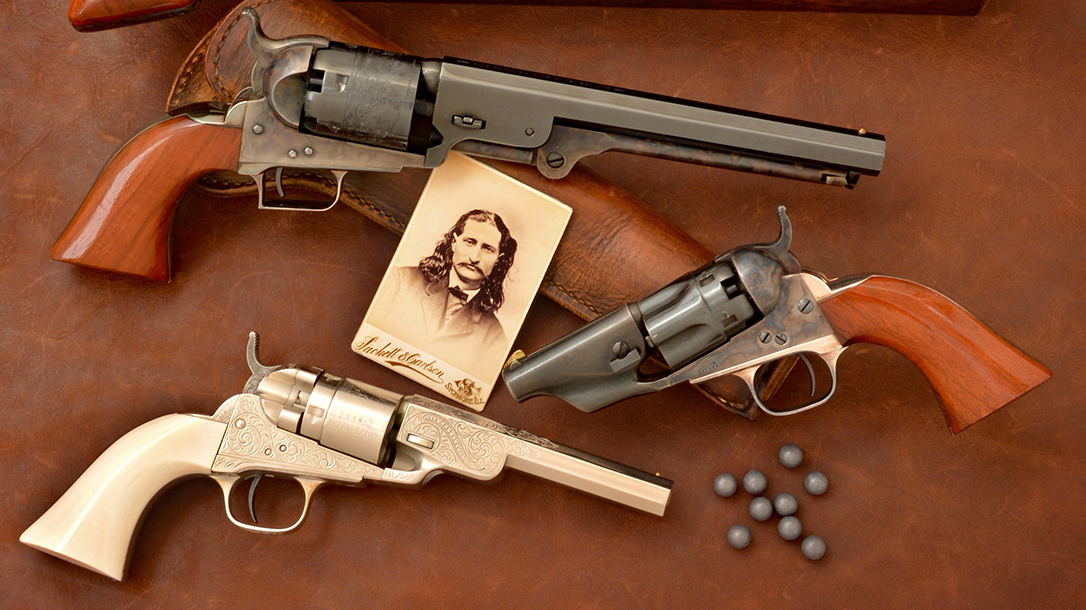Sam Colt may have created the 1851 Navy, but Wild Bill Hickok made the .36 caliber Colt pistols immortal. Indeed, there may have been more famous guns than the brace of Colt Model 1851 Navy revolvers carried by Hickok. But there was no more famous pistol caliber in its time. In 1855, Samuel Colt’s .36 caliber Model 1851 Navy was adopted by the U.S. military as its standard issue sidearm. It became the first Colt pistol to be so designated. The Model 1851 Navy began an unbroken chain of standard issue Colt sidearms for the next 130 years. The .36 Caliber Pistol became popular choice with early gunfighters.
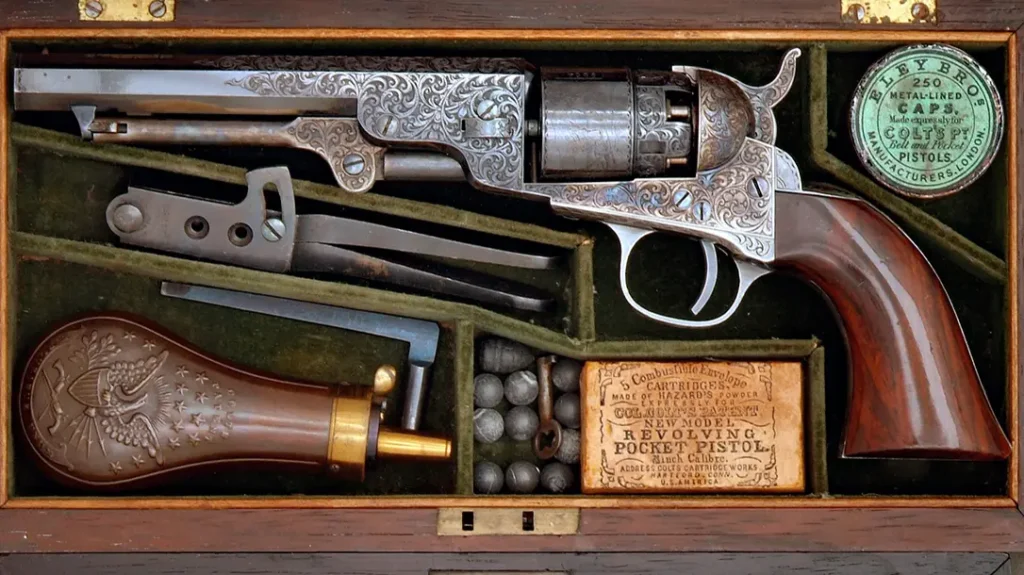
While the Cavalry often preferred the larger .44 caliber Colts (the 1847 Walker developed by Colt during the Mexican-American War, and subsequent Dragoon models produced through the 1850s and into the early 1860s), the Navy caliber was still regarded as the standard. Even after Sam Colt introduced the lighter weight .44 caliber Model 1860 Army, .36 caliber revolvers remained the most commonly carried, if for no other reason than the sheer number of Navy models produced by Colt’s between 1851 and the start of the Civil War, nearly 100,000 guns. Also, that number had increased to 185,000 guns by the end of 1865. During the war, Colt’s also produced just shy of 32,000 Police Models and the first .36 caliber Pocket Model of Navy Caliber pistols.
Advertisement — Continue Reading Below
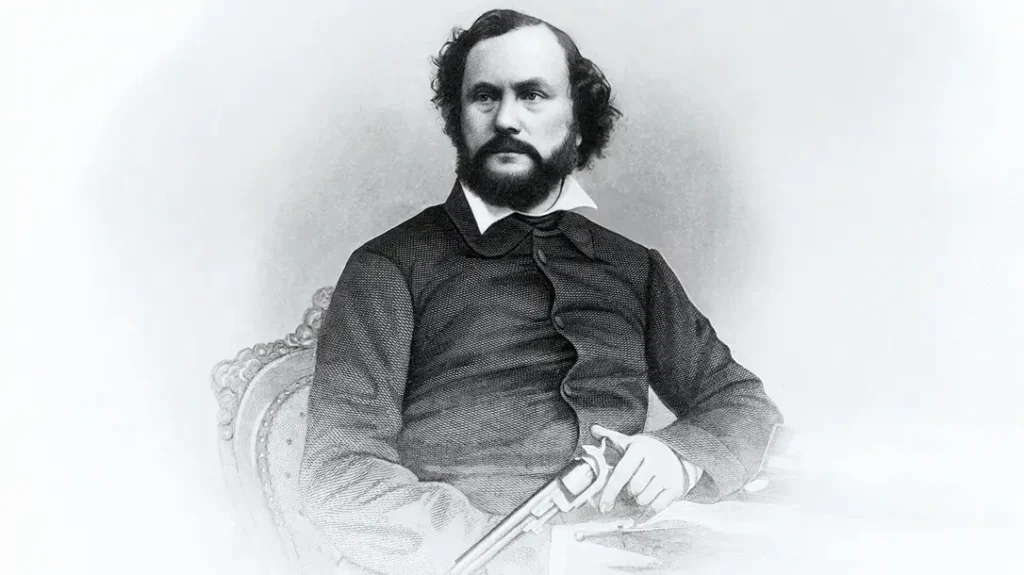
How It Started
Firstly, Samuel Colt didn’t invent the .36 caliber lead ball, as J.M. Browning would invent the .45 ACP cartridge for the Model 1911, or the .380 ACP for the Colt Model 1908 Hammerless. Both single shot pistols and long arms had been chambered in .36 caliber for more than a century before Colt patented his first revolver in 1835; he simply built his circa 1838-1841 Paterson No. 5 Holster Model to chamber it. He had previously used .36 caliber for the circa 1837 Model No. 1 Ring Lever revolving rifle, but, it was the No. 5 or “Texas Paterson” revolver that would become the most highly regarded of Colt’s early firearms.
His first gun making enterprise, The Patent Arms Manufacturing Company of Paterson, New Jersey, ended in financial ruin, closing its doors in December 1842, having been driven into receivership by creditors (headed by Colt’s own company treasurer and largest investor, John Ehlers).
Advertisement — Continue Reading Below
Sam Colt’s second arms making concern, the Colt’s Patent Fire-Arms Mfg. Co. in Hartford, Connecticut, (which he owned outright with only a few, hand selected minor shareholders), was an unrivaled success by 1850, and carried on the tradition of the .36 caliber Patersons beginning with the Model 1851 Navy. Also, after its adoption by the U.S. military and the pistol’s use throughout the Civil War, the 1851 Navy would become one of the most famous revolvers in American history. But it wasn’t alone in the lineage of .36 caliber Colt models.
Colt .36 Caliber Pistol
The .36 caliber pistol, Colt’s or otherwise, was an almost ideal size handgun for weight, balance, and accuracy. As for the popular .36 caliber round ball, at a weight of 80 grains, backed by a 22- to 25-grain charge of black powder, an 1851 Navy had a muzzle velocity in the neighborhood of 850 fps; delivering sufficient mass and velocity for a fight ending shot at typical gunfight distances, which could have been anything from arms length to 50 feet or more. Further, the “or more” was proven in 1865 by Wild Bill Hickok, who famously and very publicly extended the effective accuracy of the 1851 Navy in a gunfight to a distance of some 225 feet.
On July 21, in Springfield, Missouri, he shot and killed gunman Davis Tutt at what is believed to have been 75 yards across the town square in a long distance stand up gunfight. Tutt missed his first and only shot. Wild Bill, who had drawn his 1851 Navy but not fired first, rested the barrel of the Colt on his left arm. He then took aim and shot Davis Tutt dead where he stood. Further, Tutt suffered a single .36 caliber ball to the chest from half a block away.
Advertisement — Continue Reading Below
Hickok’s shot is the stuff of legends. Further, the 1851 Navy, among others of similar size and caliber, proved to be ideal belt guns for soldiers, lawmen, outlaws, and most anyone who chose to pack a pistol in the late 1860s.
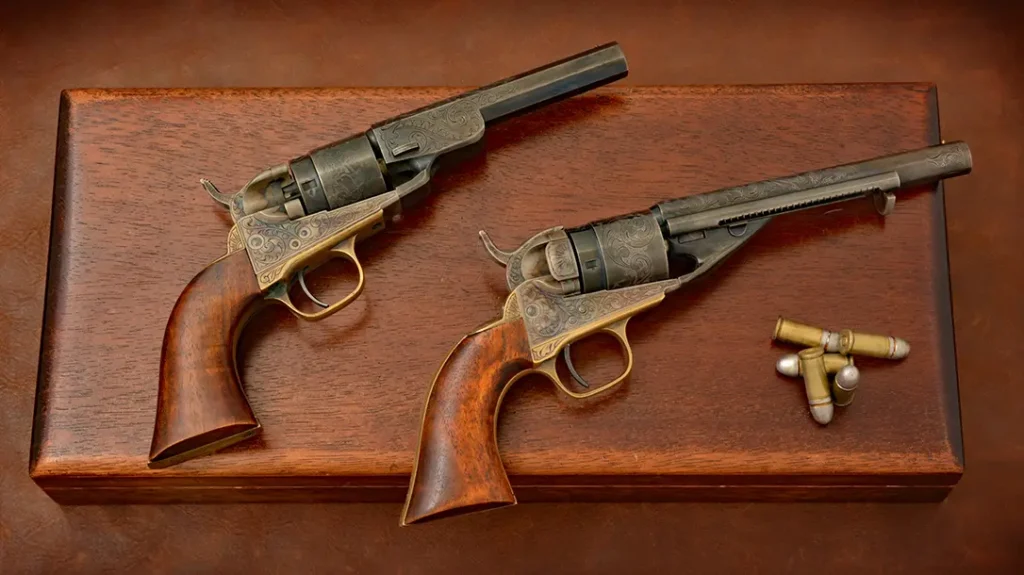
More .36 Caliber Pistols
In the late Civil War era, Colt’s, Remington, and other arms makers built a greater number of .36 caliber handguns, including Pocket Pistols. The Colt 1861 Navy (same caliber as the 1851 Navy but styled like the 1860 Army), was the basis for the scaled down 1862 Police Model designed by Sam Colt in 1861. Also, the company added a scaled down 1851 Navy, known as the “Pocket Model of Navy Caliber,” introduced in 1865, three years after Samuel Colt’s untimely passing. These two small Colt models, chambered for the same .36 caliber lead ball as their larger counterparts, found great favor among gentlemen wishing the caliber of the full size Navy but in a smaller, lighter, and more easily carried revolver.
Advertisement — Continue Reading Below
The 1862 Police Model was available in four barrel lengths, 3½, 4½, 5½ and 6½ inches. Additionally, Colt offered Navy caliber pocket pistols in 4½-, 5½- and 6½-inch barrel lengths. But both Navy and Police pistols are known to have been built with even shorter barrels, some by independent gunsmiths and retailers, and some by the Colt factory, including from 25 to 50 examples of the Police Model with 2-inch barrels produced during the Civil War. Meanwhile, the serial number sequence for the Police began at 1 in 1861, and ended at 47,000 in 1873. However, the serial numbers for the Pocket Model of Navy Caliber are within the same sequence. Thus production totals of approximately 47,000 include both the Police and Navy models. Meanwhile, about sixty percent of the guns were Police models.
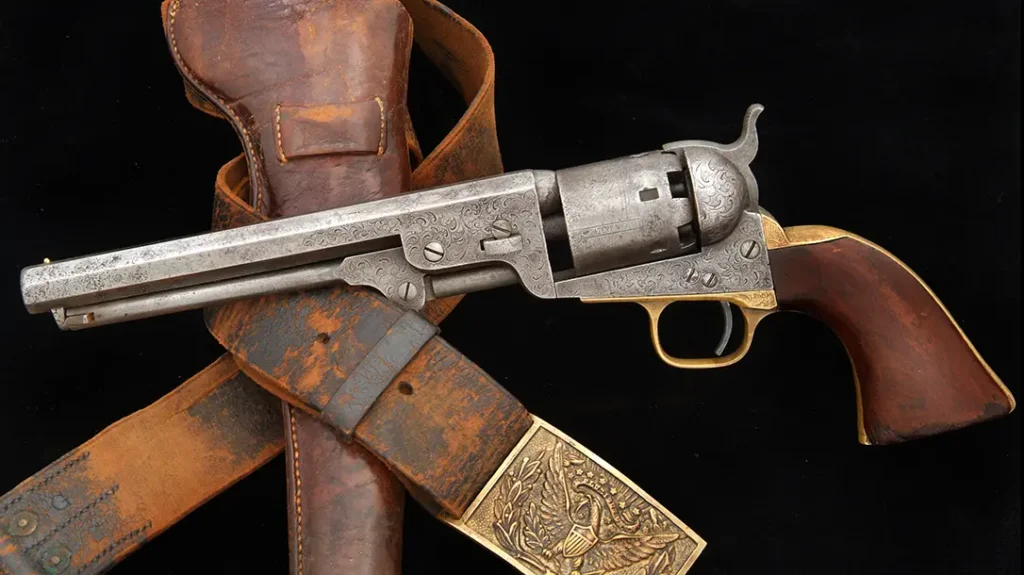
Lasting Legacy
The Civil War .36 caliber percussion models, even converted to .38 caliber metallic cartridge pistols (first to .38 Colt rimfire and later .38 Colt centerfire cartridges), remained so popular, that Colt’s continued to manufacture the Pocket Models until the early 1880s, making the .36 caliber Colts and their variations, some of the most famous of all Guns of the Gunfighters.
Advertisement — Continue Reading Below
